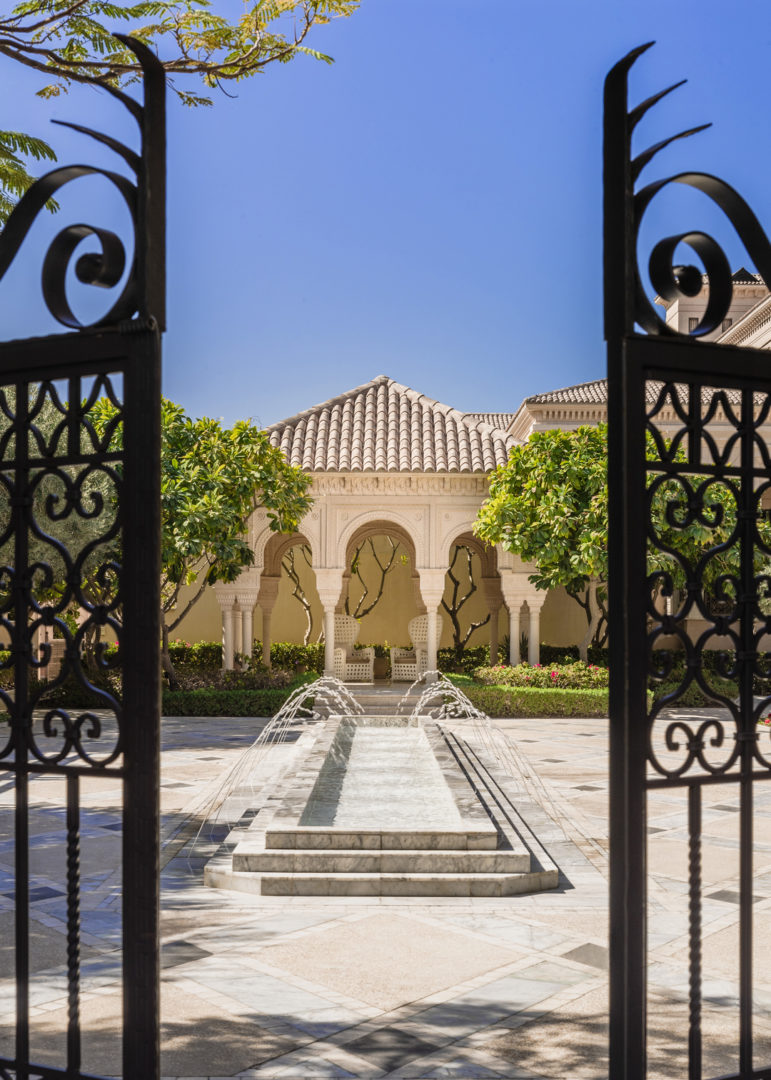Given the current coronavirus outbreak, physical space has become increasingly critical, whether in the context of social distancing or simply the lack of it. As we look to the future, our consideration of physical space and how we feel about it as a guest, but also how hotel brands can provide it, is likely to become increasingly important. In this article, I will examine physical space and its relevance to luxury hospitality that goes beyond being simply a response to the current situation.
A few years ago, I wrote a series on “Redefining luxury in hospitality”. One thing I didn’t mention then was space. But even before the emergence of Covid-19, I recognized that luxury is about space – physical space, but also the broader concept of space and what it means for people – and no more so than in hotels and hospitality.
In the first part of this three-part series, I will explore the concept of space and the hotel industry’s relationship with it in recent years. In the second part, I will look at the definition of space in relation to luxury hotels and hospitality, which was inspired by a recent trip to Dubai. Finally, I’ll look at the opportunities for hoteliers and how they might create space – or at least a sense of space – and meet the needs and expectations of their guests today in the context of luxury.

Peace, tranquillity and space, The Wellness Spa Courtyard, One&Only The Palm, Dubai — courtesy One&Only
The hotel industry’s relationship with space
Historically, hotels had a whole range of guest room sizes and types. With brand standardization, a minimum standard was introduced and guest rooms were categorized based on size. Single rooms were the smallest and cheapest. Room size increased proportionally going from doubles to suites, with various grades of deluxe rooms that were all priced accordingly. Suites usually included additional rooms. It was all about how much physical space the guest had.
Standardization of guest room size might still be the case in some sectors of the industry. However, the importance of room size has changed as our lifestyles and expectations have altered. It may also depend on the purpose of the trip, the location, occasion or other factors, such as who we are traveling with; or even the season – a small cozy room in winter versus a large, light and airy room in summer.
Space has also become more limited, particularly in some locations. This is due, in part, to increasing population and migration to cities that has put pressure on space in urban areas, as well as the threat of climate change with loss, for example, of highly populated low-lying coastal areas. As the price per sq. metre for building has significantly increased, the space available has become all the more precious and premium. Space, in itself, is a luxury.
The reimagining of hotel space
For economic, lifestyle and social reasons, new concepts have emerged. From guest rooms to public areas, the use of hotel space has been redesigned and reconstructed. For example, there has been an increase in communal and social areas, such as use of the lobby area, addition of ground floor cafés and rooftop bars. Social hotel space may be designed exclusively for the hotel guest, but may also be open to the public attracting the local community and non-resident visitors. Five Palm Jumeirah Dubai, for example, which is strategically located at the entrance to Palm Jumeirah, is known more for its nightlife and party scene than its accommodation. It presents itself as “a party and culinary hot spot” offering “a new experience every day” for guests, but is also designed to attract a wider audience.
Social space in hotels, such as restaurants, cafés and bars that are open to the public, may be appreciated by guests by providing a more local experience, as well as advantageous for the hotel’s revenue. However, at the more premium end of the spectrum, it also risks alienating guests. Some hotels have responded to this by creating exclusive guest areas that offer more privacy with quiet places to relax, such as guest-only lounges, libraries, quiet rooms or guest-only bars that tend to have a more residential feel. According to Katharine Le Quesne, Managing Director of HoCoSo, a hospitality consultancy, “There is a further risk that asset managers are so focused on monetizing every aspect of the real estate and optimizing investment returns that the use of space becomes overly manipulated to drive guest spending – luxury guests are particularly sensitive to this.” So, use of space needs to be carefully considered with the guest in mind versus a desire to maximize the use of space to generate earnings.
As a general trend, guests have started to spend less and less time in the privacy of their own rooms. As a result, room size has tended to diminish and been redesigned to focus on spaces mainly for sleeping. This has certainly been the case amongst budget to mid-range hotels, from Moxy and Citizen M to Ian Shrager’s PUBLIC Hotels, where guest room size is small and rooms are functionally practical, but this comes with additional social or public space. At the extreme, in relation to room size, there are capsule or “pod” hotels. These originated in Japan as a safe and low-cost place to spend the night, but the concept has evolved and is now being embraced by other sectors of the industry with, for example, eco lodges and luxury glamping using the pod or capsule accommodation format.
It’s not just about physical space
Whilst size may still be important in some sectors of the industry, space is not just about size. It’s also about the quality and feel of a room, as well as the experience it offers. There are some very expensive rooms – for example, in Paris – where there are relatively petite rooms or suites that are beautifully romantic, with a fabulous terrace and stunning views. These rooms still command top prices despite their diminutive size. There are also rooms that are uniquely designed, providing a more creative or innovative space and/or use of space, and a novel or exceptional experience. Le Quesne agrees, “The way we think about space [in hotel design] has evolved dramatically. Thirty years ago, the purpose was to create separate functional spaces within a hotel asset. This evolved to focus on service delivery within different operational areas; and today, space has been elevated to a place of experience, that should touch our subconscious and delight the senses”.
As part of a progression in economic value, economies appear to have evolved from commodities to goods, to services and now to experiences, and the hotel industry is no exception. As hotels focus on creating experiences – as much as and in addition to providing overnight accommodation – the size of guest rooms may become less relevant. Take Black Tomato’s “Blink”, for example, a unique experiential concept that respects and uses space to create a one-off guest experience. The room size is immaterial.
It is also about our understanding of space…
In Western society, at least, our understanding of space is more related to an unoccupied, free or continuous area in one or more dimensions. It’s about the relationship between objects or, for example, a period of time. In the East, however, space is related to the relationship and interactions with people. The Japanese have several different words for space, with each carrying a different meaning. For example, wa relates to “creating harmony”; tokoro is about context, which is closely related to the location or place, and also in creating a “state of being” and “connecting with the world”. A third word, ma, relates to creating moments of “awareness and quiet” and for reflection.
E. T. Hall, in his book, The Hidden Dimension, also explored the meaning of space and how it affects human relations. He defined four aspects of space from intimate and personal to social and public. Hall’s definition relates to how we use space, but also how it affects interactions and creates relationships, which may be different across cultures. It’s also about how we feel and behave in relation to space available around us. In light of the coronavirus outbreak, this is something we can probably all personally relate to better today.
This deeper meaning of space fits well in the context of luxury and luxury hospitality. It also identifies opportunities for hoteliers to create space – or a sense of space – that meets the needs and demands of luxury travelers and guests today. I’ll explore this further in the second and third parts of this three-part series.
References: Hall, E.T. (1988). The Hidden Dimension. Bantam Doubleday Dell Publishing Group. Reissue edition.




